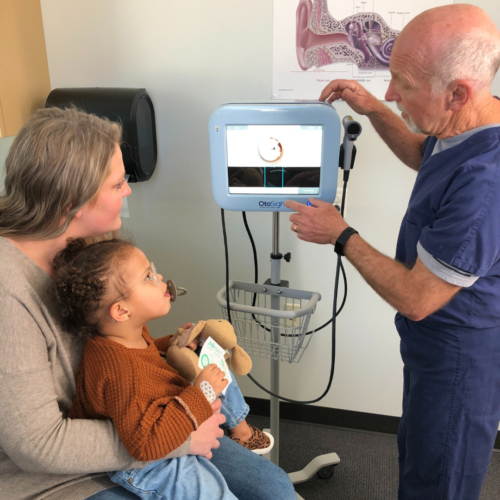Phone
866-411-EARS
Address
PhotoniCare Inc.
2800 Meridian Parkway, Suite 175
Durham, NC 27713

Eight out of 10 children will have a middle ear infection, but what if your child seems to have them more than what you think is normal? What if your child seems to have difficulty hearing, and complains about “water in the ear” when there doesn’t seem to be a reason for it? When this happens, it may be time to seek help by calling your primary care doctor, who may refer you to an ENT specialist, for the best next steps for your child’s ear health.
For some children, the next best step in managing your child’s ear health is the placement of tubes within the eardrum, also known as tympanostomy tubes. About 700,000 children each year have ear tubes surgically placed t, according to the American Academy of Otolaryngology-Head and Neck Surgery. Ear tubes typically cost around $2-5,000, most of which is usually covered by insurance. The surgery does carry some risk, partly because the child will be put under general anesthesia.
We sat down with Dr. Michael Novak, an Ear, Nose and Throat doctor from Carle Foundation Hospital in Urbana, Illinois, to chat more about ear tubes and specifically why the fall and winter months are a common time for placement of ear tubes.
What are the common reasons for tube placement in children?
Tubes are generally placed in children to treat frequent infections (4 or more over a 6 month period) or persistent fluid in the middle ear (fluid that stays in the ear for at least 3 months).
If a child is a candidate for this type of surgery, why are the fall and winter months the most common time for tube placement?
The most common times for tube placement are late fall and early winter since the infections and fluid typically are caused by colds and flu. It may take 3 months or more to determine that a child is prone to ear infections and would benefit from tubes. The pattern of frequent infections tends to start in the late summer or early fall when kids get back into school and start sharing viruses, and we are indoors where colds can be communicated more easily.
Is there immediate relief for the child after the tubes are placed?
Yes, the relief of the infection and removal of fluid gives immediate relief from pain and hearing loss. The improvement continues over 2-3 days as the ear returns to normal.
What are the general instructions and follow-up care for ear tubes?
I tell my patients to where ear plugs when they are swimming in lakes and rivers where the water is not as clean as the swimming pool or shower. Otherwise, there are no special precautions necessary for the great majority of children. If drainage from the ear develops, it is treated with topical antibiotic and corticosteroid drops, and usually clears up quickly.
Thank you Dr. Mike for the fantastic insight regarding ear tubes – paying attention to the frequency and time of year of ear problems are key to a successful outcome!

The COVID-19 pandemic has created numerous challenges for parents. Navigating… Read More

PhotoniCare sits down with Dr. Michael Novak, an Ear, Nose… Read More

This week on the #EnginEarGuys blog we talk about otolaryngology… Read More